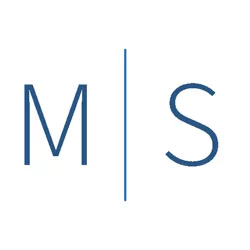A Great Learning Resource – Your Local Museum
There may be a great learning resource near you hiding in plain sight. I’m talking about your local art museum. I believe that you can learn a lot by studying other photographer’s work. So, if you are going to study photographs you might as well study great ones. Luckily, there’s a place you can go to do this; an art museum. However, I’m not talking just about the photographs on display. Rather, I’m referring to the ones the public doesn’t get to see often; the ones stored in the museum collection. Most people don’t realize that most of a museum’s collection is not on display.
Recently, as part of a group from a local camera club, I visited the Anne Wilkes Tucker Photography Study Center at the MFAH (Museum of Fine Arts Houston). We got to see a number of great photos including a couple of my personal favorites, Migrant Mother by Dorothea Lange and Clearing Winter Storm, Yosemite National Park, California by Ansel Adams.
We also got to view photos by Edward Steichen, Alfred Stieglitz, Edward Weston, Brassaï, Mike Disfarmer, Robert Capa, Joe Rosenthal, Henri Cartier-Bresson, Robert Frank, Yousuf Karsh, Ruth Bernhard, Diane Arbus, Annie Leibovitz, Reinhart Wolf, Paul Strand and Timothy McCoy. Now that is an amazing array of photography talent! It was an amazing experience to see these photos up close without glass separating us from the photo. The Study Center staff was knowledgeable and provided some background contextual information.
Why Aren’t They On Public Display
The MFAH has over 35,000 photos in its collection and only a handful are on public display. These 35,000 photos represent about one-half of MFAH’s total collection but photography simply doesn’t get near one-half of the display space. It’s simply matter of giving the public what it wants.
The curators would love to everything on display but there isn’t time, space or money to do so. It’s as simple as that. However, just because it isn’t on public display it doesn’t mean you can’t see it. It turns out (at least for the MFAH) all you have to do is ask. All of these photographs represent a learning resource for you if you’ll just make the effort to ask.
But I Don’t Live In Houston
So, you don’t live in Houston and can’t come to the MFAH Study Center. First, let me offer my sympathies that you miss out on such a wonderful place to live. Second, all is not lost. The MFAH is not the only place that has a data center and allows visitors. With a quick search I found that the Art Institute of Chicago and the Museum of Modern Art in New York both have study centers. I’m sure there are many more.
Houston, Chicago and New York are big cities with big museums and therefore have the resources to have study centers. If you live in a smaller city the local museum may not have a study center but there is still a way to see part of their collection that is not on display.
As I alluded to earlier, museum curators don’t keep items in their collection off of display because they want to. They really would like for everything to be available for viewing. If they don’t have a study center figure out a way to contact a curator and ask to see something. The curators will be thrilled that someone expressed interest and may be willing to work with you on getting access. Don’t be afraid to ask, all they can say is “no”. And “no” is the answer you already have so what have you got to lose?
Do Some Planning
Some basic planning can make your visit to a study center much more enjoyable.
- You will probably have to schedule weeks (often 4 or more weeks) in advance. They need this time to determine what is practical in terms of getting it from storage and also for accommodating scheduling issues.
- Review their collections (often posted on their website) and make specific requests.
- In addition to specific requests ask the curators for some suggestions. For example, “I’m interested in B&W landscapes, what would you suggest?” They’d be flattered that you ask and you might just see something that you would have otherwise missed.
- Be flexible. Museums work with small staffs and limited budgets so be flexible with your requests.
Museums are a terrific learning resource. Use it wisely and fully and you’ll enjoy the learning experience.
Leave A Comment And Share
What’s been your experience in learning by studying other photographers? I’d love to hear your comments and feedback. Please leave a comment in the comment box below.




